How to Make Meal Planning and a Food Inventory that Actually Works
Do either of these mealtime scenarios drive you crazy?
- It’s an hour before dinnertime and you and your people don’t know what to eat. You play the ever-classic game of “What do you want?” “I dunno, what do you want?” Before long, we’re all hangry and rude.
- Paying the “food tax” – when food goes bad because you forgot you had it.
Fortunately, the hubs and I tend to be on the same page with these issues. So, for the first time in over 5 years of marriage, we tried meal planning and keeping a food inventory.
It was a bust. We didn’t use the meal plans and never updated the inventory.
Eventually we tried again by purposefully our “lazy human tendencies.” This time it’s working! Planning meals has been so much easier and we’re not wasting as much food. Huzzah! (More about that in the post!)
You can live intentionally with passion and purpose as God’s beloved.
Stop wasting time and energy on things that are detracting from your beautiful life!
Curious to learn more about you can stop wasting time and energy being hangry and frazzled? Let’s dive in!
- Identify what isn't working
- A digital approach to meal planning and food inventory
- Bonus tip: Prep your meals the night before
- How meal planning and keeping a food inventory can improve your life
- Posts related to meal planning and keeping a food inventory
- Recapping how to meal plan and keep a food inventory
Identify what isn’t working
During 2020, so many good changes happened when we chose to be intentional + pursue peace. It was a game-changing year for our family because we made so many healthy micro-changes – even in the midst of a pandemic.

One of those changes was being more intentional with food, which includes so much more than just food:
- Budget – how much you spend on it, how much you waste/lose because it expires before you use it
- Time – earning money for said food, buying the food, preparing it, storing it, eating it…
- Energy – how much energy goes into both your budget and time!
If you, too, have tried meal planning and not been successful, perhaps you also need to let go of your “should’s.” They might be holding you back from finding a system that works for you.
Here’s some of my “should’s” that you might relate to…
The should’s
Too many Pinterest perfect ideas had been my reference for meal planning and keeping a food inventory.
- It needs to be beautiful and handwritten with adorable penmanship or extravagant calligraphy or printed each week in an explosion of colors and fonts.
- You must have a detailed, line-by-line meal plan prominently posted in your kitchen. Ditto for a food inventory.
If you are all about the beautiful, detailed meal planning system – rock on. We need people like you to make everyday things more beautiful.
That’s just not me. I don’t have the patience or committment to:
- Beautifully handwrite a detailed meal plan for each day of the week (legible is good enough for me!).
- Print off a new meal plan each week. I want to save my ink!
- Actually update a written inventory over and over again with additions/subtractions.
A digital approach to meal planning and food inventory
One Google Excel Doc: 3 core tabs
Since pen and paper clearly wasn’t working for us, we moved both our meal planning and food inventory system to one Google Excel doc.
I’m sharing a screenshot below, but if you can’t read that clearly, here’s the breakdown of what you’d see:
- One tab for the Food Inventory, which includes these columns: Date inventoried, Food, #, Category, Where (pantry or freezer), Notes
- One template tab for Meal Planning (i.e. our go-to outline for meals throughout the week)
- A new tab for each week of planned meals
For us, this was easier to maintain and maximize than our former paper approach.
During our weekly planning, we add a new tab with meal planning for the upcoming week or weeks.
Throughout the week, we jot down on our food additions/subtractions on our whiteboard. Typically, during our weekly planning or after we get groceries, we update the digital food inventory using those notes.
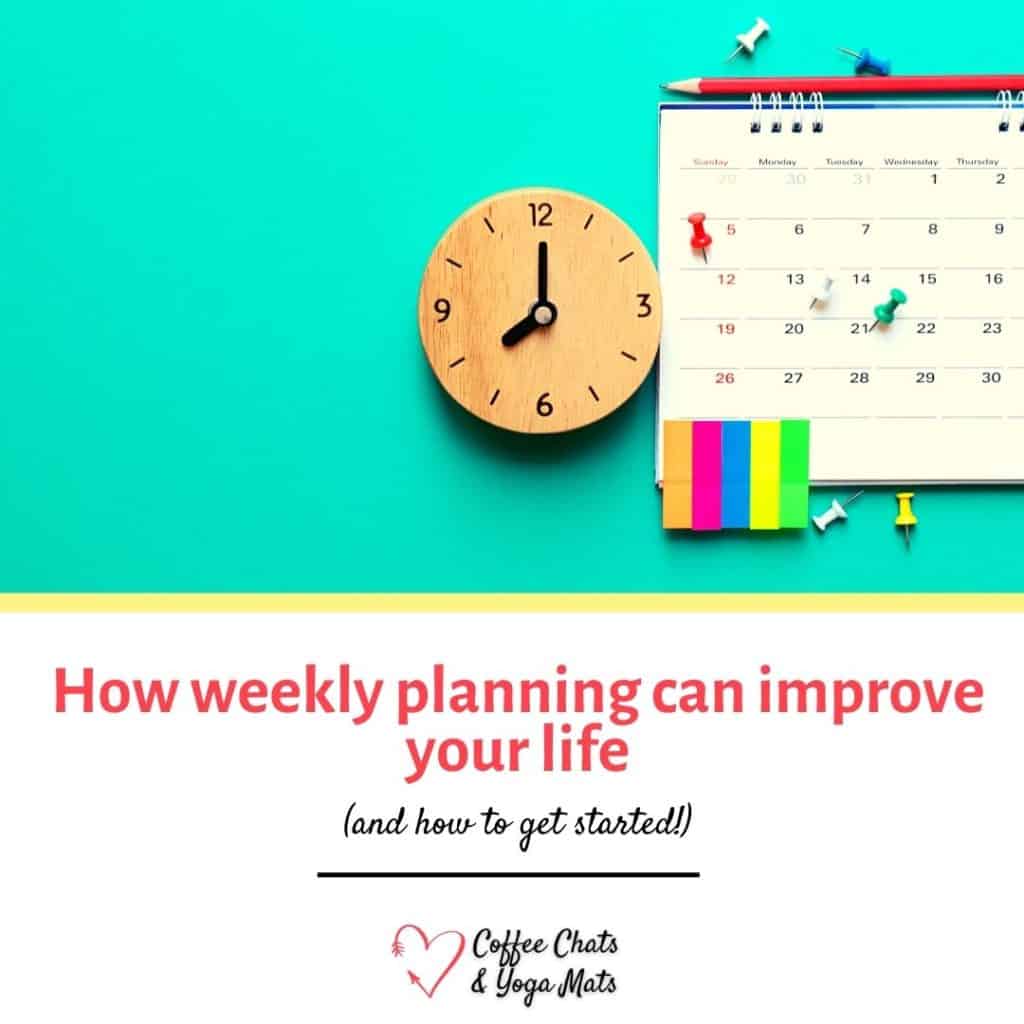
Develop a meal planning template
Like many families, we tend to have meal defaults. For instance, my husband eats the same peanut butter sandwich for breakfast every workday morning. So, we popped that on for every workday.
This also helped me establish a go-to flexible rhythm for feeding Little Man and I. For example, we’ll have hot cereal for breakfast a couple mornings a week. I choose between oatmeal, baked oatmeal, Malt O’ Meal, etc. the week-of. It gives me room for creativity but also reduces decision fatigue.
My husband is an extraordinary bulk entree-making cook with a penchant for freezing whatever he can.
So, we decided to maximize that by also picking a couple nights a week that would be frozen entree nights.

A simple digital food inventory tracker
Since we didn’t maintain our paper food inventory list when we had it, we went digital.
We added a tab to our meal planning Google Excel doc and added these columns:
- Date inventoried – so we can quickly see if we’ve checked this recently or it’s been a few months
- Food – what is it
- # – how much do we have of it. I prefer to base it off of number of containers or bags.
- Category – like seasoning, dessert, veggie, entree, etc. This has been helpful for quickly filtering to our frozen entrees, etc.
- Where – pantry or freezer
- Notes – If there’s anything to remember. For instance, some things I don’t want to accidentally buy again. Sometimes it’s hard on our stomachs or Little Man doesn’t eat it. So I’ve noted “never buy again.”
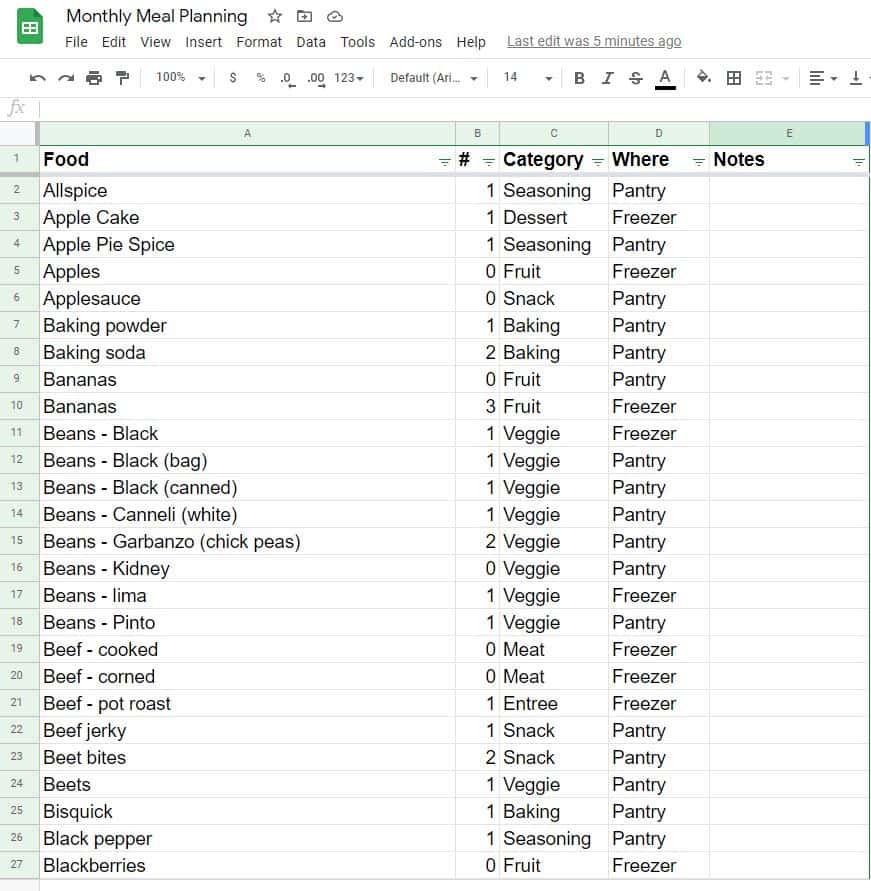
Have or create two whiteboards
Just a head’s up, my DIY whiteboards aren’t pretty. Seriously.
But do we actually use these tools? Yes!
That, my friends, is far more important than pretty (at least in my world).
Meal planning whiteboard
Rather than printing off a new meal plan every week, I printed the meal planning template and popped it into a sheet protector. I then write down updates with a dry erase marker.
During our weekly planning, I update the template with our basic plans.

Food inventory update whiteboard
Our food inventory update whiteboard is very similar to our meal planning whiteboard.
I pop a sheet of paper into sheet protector and stick it on the fridge.
Throughout the week, I jot on the sheet what’s been added or removed.
My uber advanced tracking code:
+ # item = What’s been added to our pantry or freezer, including the number of the item, if applicable (like 2 tomato soup cans)
– # item = What’s been removed to our pantry or freezer, including the number of the item
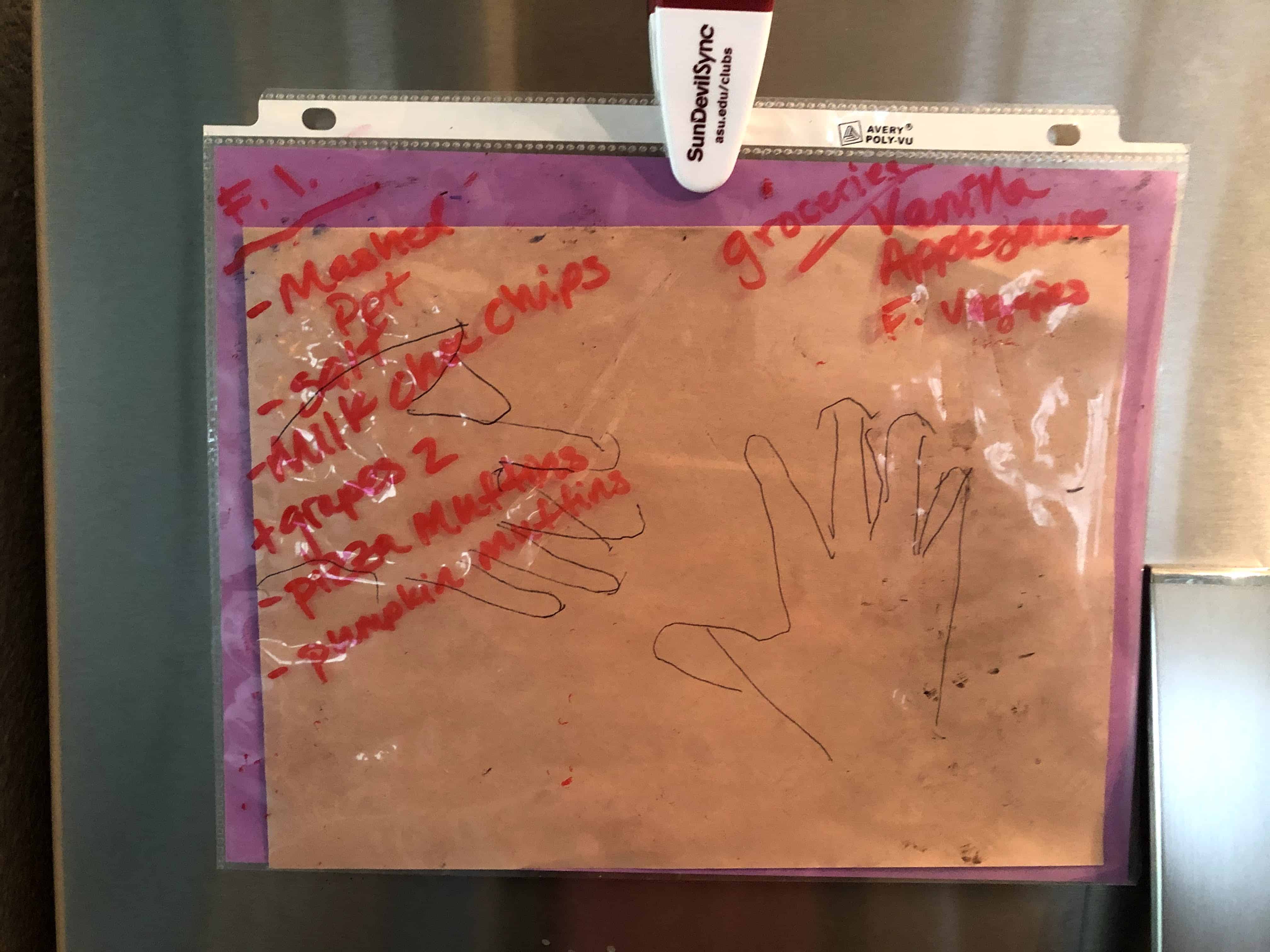
Bonus tip: Prep your meals the night before
Want a simple way to create more peace in your house?
Prep tomorrow’s breakfast, lunch and supper today!
I’m not encouraging you to cook a full-fledged meal the night before.
However, if you can take 5 minutes to prep the night before, you might feel a bit less stressed and save time tomorrow!
- Having a frozen dish? Move it to the refrigerator.
- Eating sandwiches? Make them tonight.
- Set out your non-fridge breakfast items, like cereal, granola bars, coffee, tea, etc. to make it easier to grab.
- Move tomorrow’s meal options so they’re easy to fetch from the fridge, like stacking them next to each other.
Personally, I’m constantly trying to get better at drinking “more” water. You feel me?
I also prep my pitchers of water the night before. This way when I wake up the next day, I’m ready to start guzzling water!
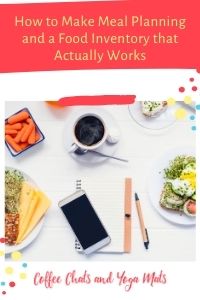
How meal planning and keeping a food inventory can improve your life
Meal planning food inventory tools can help you:
- Reduce stress and decision fatigue – it’s already planned!
- Establish a meal rhythm and combat boredom
- More effectively use your resources – like not buying as many duplicates
- Decide when to make higher effort foods
- Be more creative with what you have
- Plan meals – the food inventory helps you see what you do and don’t have
You can feel far less frazzled about pulling together meals because it’s already sketched out.
Will you need to pivot? Totally. Having some easy go-to meals planned, though, has made it loads easier to pivot.

Posts related to meal planning and keeping a food inventory
- 5 Best Mealtime Products for Babies through Toddlers
- 14 Easy Mealtime Hacks for Parents of Toddlers
- 11 Mealtime Hacks for People Who Want Stress-Free Meals
- 5 Best Mealtime Products for Babies through Toddlers
- Use Monthly Planning to Prioritize What Matters Most
- How Weekly Planning Can Improve Your Life
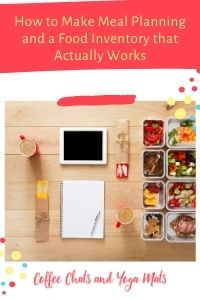
Recapping how to meal plan and keep a food inventory
As we’ve discussed, here’s how you can get started with meal planning and keeping a food inventory:
- Identify what isn’t working
- Develop a meal planning template
- Have or create two whiteboards
- Bonus tip: Prep your meals the night before
Is meal planning and keeping a food inventory for you?
Ultimately, that’s your decision to make.
You can live intentionally with passion and purpose as God’s beloved. Perhaps meal planning and keeping a food inventory can help you live more intentionally!
Hopefully, this post has given you some ideas for what might work (and not work) for your household.
It’s your turn. Do you meal plan? Keep a food inventory? What works for you? What doesn’t?
Let’s chat in the comments!
P.S. Want some crazy simple steps to start living intentionally? Grab the Embrace Your Potential Playbook. It’ll help you zoom in on your God-gifted personality and give you practical tips to be more intentional, passionate, and purposeful as God’s beloved so you can become the best version of yourself.

I’m Cortney, a recovering over-achiever and God’s beloved who loves helping fellow Christian women like you embrace your God-given gifts so you have the confidence to live authentically.
I’m also a full-time mama to two sweet little boys, wife to my best friend, motivational speaker, and part-time Christian life coach. Chai lattes, strong coffee, podcasts, yoga, dance, and fairy tales nourish my soul and add sweetness to life.
Discovering the joy of embracing my God-given gifts and who He created me to be was a game-changer—a journey that brought freedom, unexpected delights, and relief from guilt. Finally, I felt free to be myself and ditch the pressure of being someone I wasn’t.
Incorporating those gifts into my day—from weekly planning to deciding on commitments, nurturing my marriage, and parenting—transformed everything. Now, I can’t imagine life without the perspective of fully embracing who God created me to be. I was missing so much without it!
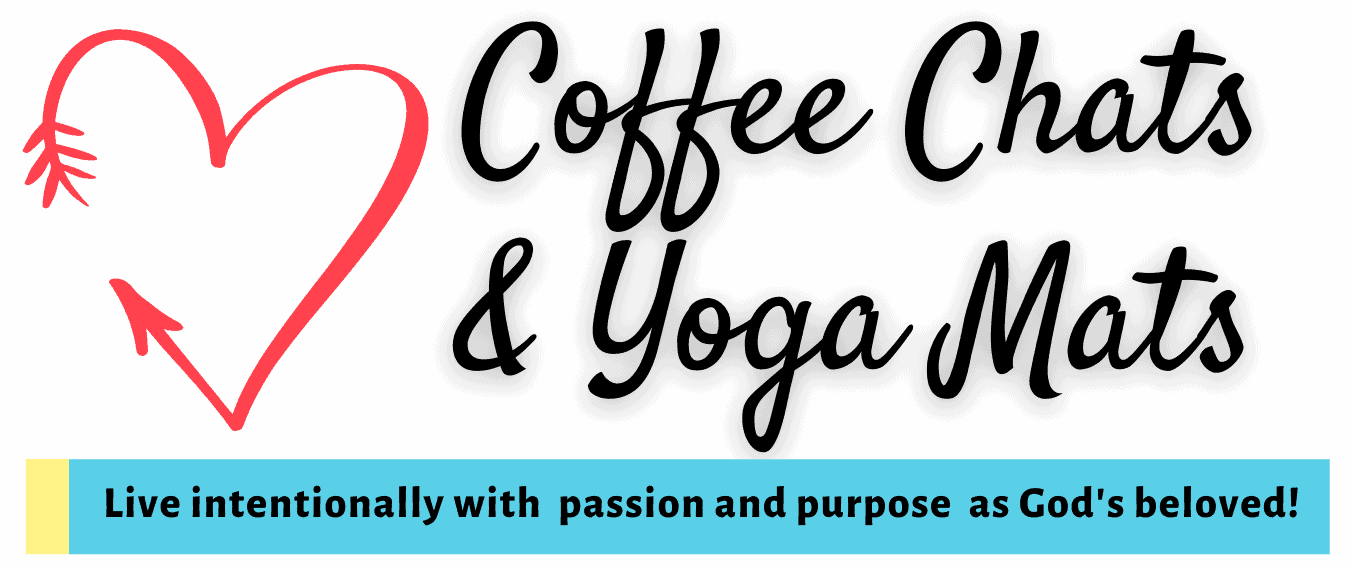
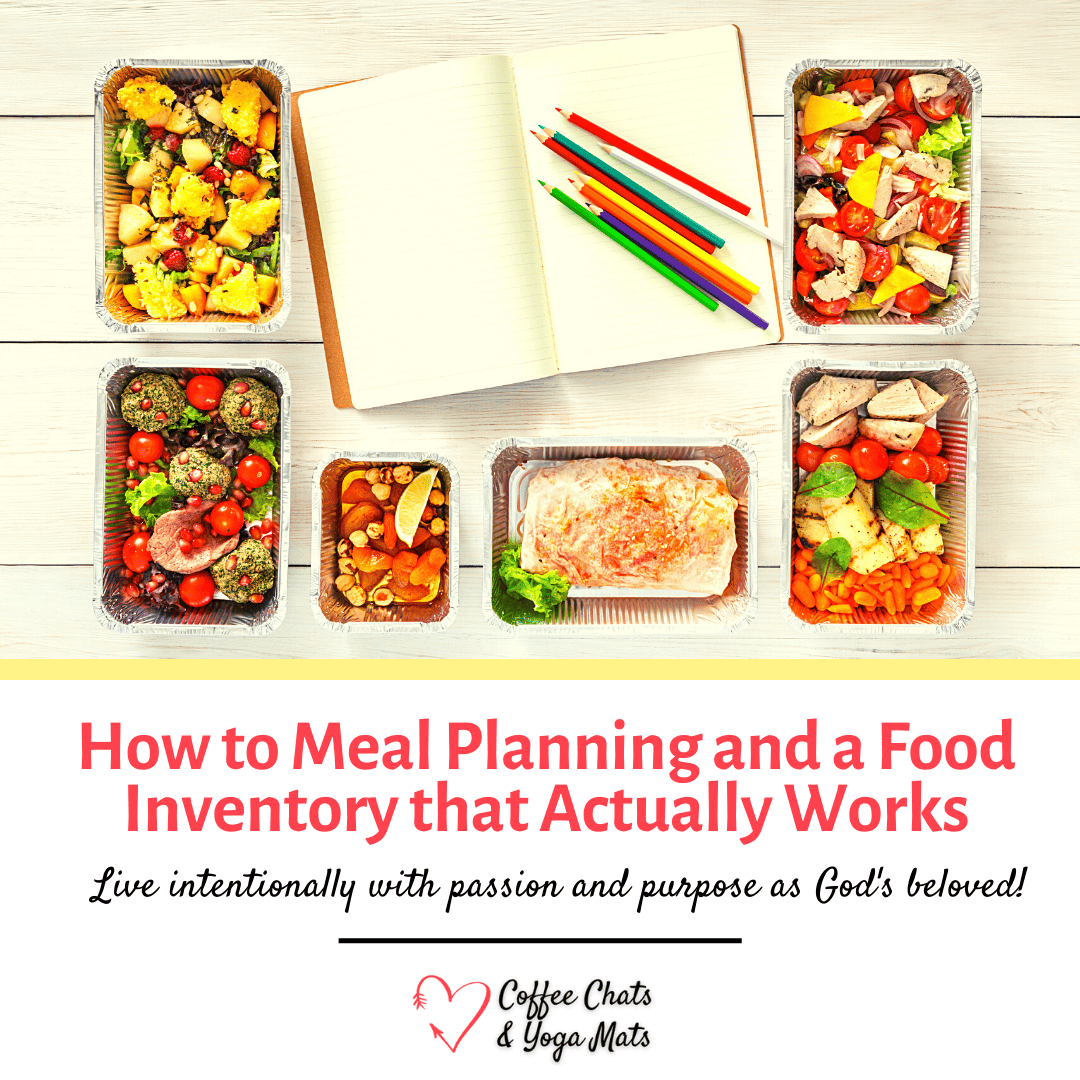




6 Comments